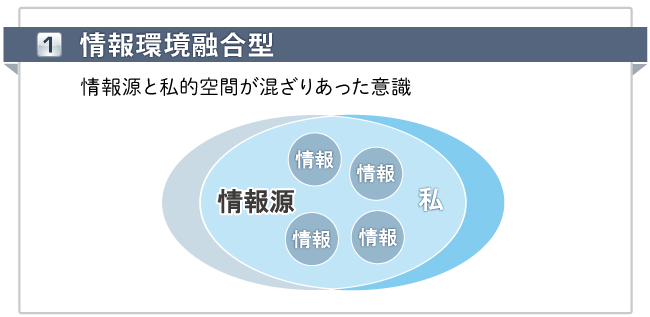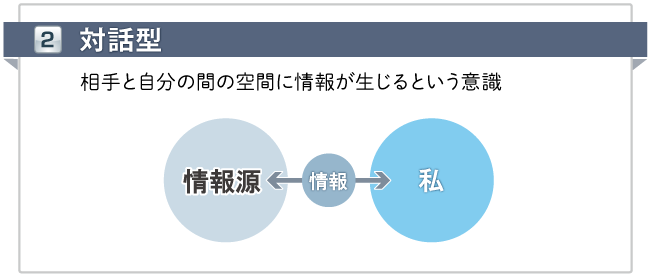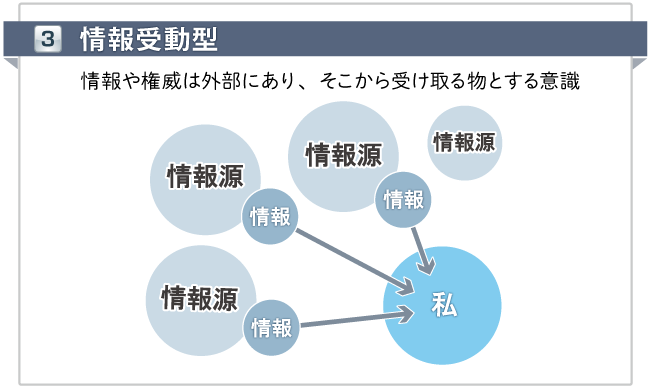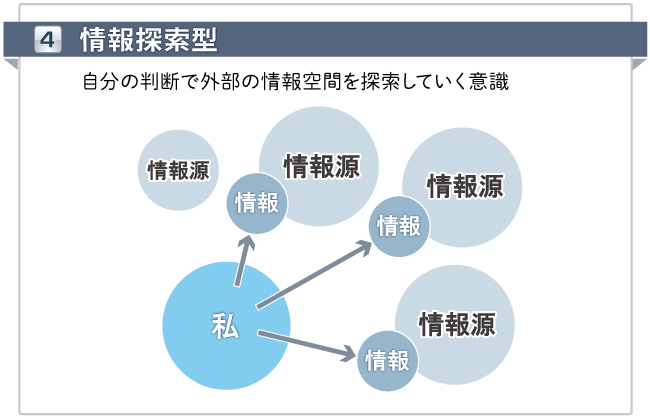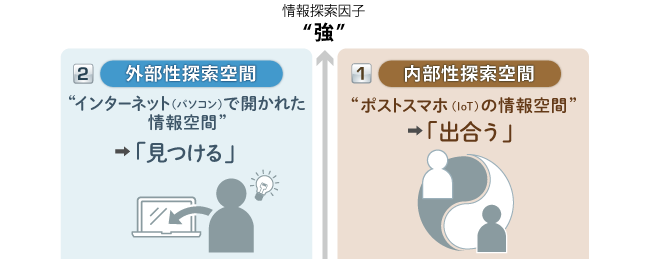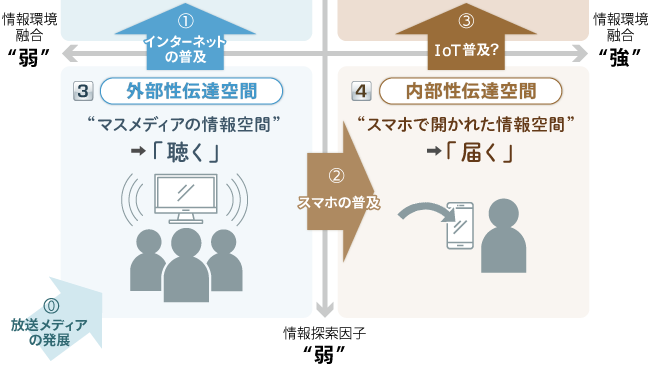This is the third installment of our commemorative series marking the publication of the 'Information Media White Paper 2018'.
Ten years after the iPhone's launch, 2017 saw increased focus on smartphone-specific information behaviors (actions related to communication, media use, and information exchange), such as "Instagrammability." For companies, designing campaigns without considering smartphones is now unthinkable.
While smartphones reign supreme today, signs of change are emerging. People who don't necessarily depend on smartphones are emerging as new drivers of information behavior.
The opening feature of the 'Information Media White Paper 2018', titled "How Long Will the Smartphone's Dominance Last?", discusses these new information behaviors and the potential of IoT. This two-part article will introduce the results of the cluster analysis based on information behaviors that formed the basis of the white paper, shedding light on these new information behaviors that could be termed post-smartphone.
Information Media Shaping People's Information Behavior
In advertising and promotion, we often refer to our targets as the "audience." We agencies diligently deepen our understanding of their insights and formulate messages. When we use the term "audience," we unconsciously assume the existence of people who are in a posture to receive the messages we send out, or people placed in an environment where they receive them.
The act of "viewing" represents a framework for information behavior born from mass media like radio and television broadcasting. However, the development of the internet, beginning in the 1990s, normalized the act of individuals actively seeking out information. And as is well known, the recent development of smartphones has created new information behaviors, such as social media, significantly altering the structure of advertising. In the social media world, where the boundary between information one posts and information others post is blurred, can we truly say that smartphone users are "viewing" messages someone else has posted in the same sense as television?
This new information media environment generates new information behaviors, fundamentally altering the very framework of people's information actions. And changes in the framework of information behavior will also impact the nature of communication between customers and companies. Before we label people as "audiences," those involved in advertising and promotion should be more conscious of this reality.
New Types of Information Behavior Created by Information Media
So, what kind of information behaviors are modern information media bringing about in people? Figure 1 classifies people's information behavior preferences into four types, based on original research by Dentsu Inc. Media Innovation Lab. While detailed explanations are omitted, the survey set 6 categories and 54 information behavior items (※1) and asked which behaviors people would choose depending on the situation. To examine the impact of IoT on marketing, the information behavior items included not only existing information media but also behaviors anticipating future IoT environments. Based on the response data, four factors obtained through factor analysis were identified as types of information behavior (information behavior factors).
※1 The six categories for setting information behavior items are as follows: "Individual attitudes and policies regarding information acquisition," "Timing and methods for receiving information," "Types of information sources," "Accuracy of information," "Methods for acquiring and using information," and "Types of advertising and promotion."
The "Information Environment Integration Type" combines multiple characteristics of information behavior we envision for IoT: delegating information gathering to others, desiring delivered conclusions, and being willing to disclose personal data to enhance information accuracy. It is also compatible with immersive UIs like VR/AR. This type involves minimal reliance on external sources, perceiving information as a result rather than a means of deliberation, and represents information behavior where sources and personal space blend.
The "Information Exploration Type" is an information behavior type where the individual is central, preferring to search for external information sources based on their own judgment. This involves searching for information themselves each time, selecting information themselves, and encountering information they hadn't noticed before. It is an active information behavior that emerged during the shift from mass media (TV) to the internet (PC), possessing characteristics contrasting with the "Information Environment Integration Type," where the distinction between self and others is ambiguous. Other information behavior factors include the "dialogue-oriented" type, which values persuasion through conversation, and the "information-receptive" type, which seeks judgment criteria externally. For details, please refer to Figure 1 on page 25 of the 'Information Media White Paper 2018'. Here, we focus on the two information behavior factors that strongly influenced the cluster analysis introduced next: the "information environment integration type" and the "information exploration type".
What are the four "information spaces" created by modern information media?
Figure 2 summarizes the 54 information behavior items into four frameworks by grouping them based on the factor loadings of the two information behavior types (factors): "Information Environment Integration" and "Information Exploration." The vertical axis represents the strength of the "Information Exploration" (factor) loading, which can be interpreted as the level of proactivity in information acquisition. The upper quadrant gathers information behaviors that prefer to "explore" information independently, while the lower quadrant gathers those that prefer to have information "transmitted" to them. The horizontal axis represents the strength of the "Information Environment Integration" factor loadings, signifying the difference between internal and external information acquisition locations. The left side gathers information behaviors that prefer information sources in "external" (public) spaces, while the right side gathers those that prefer sources in "internal" (private) spaces (specific information behaviors will be discussed later).
By organizing these 54 information behaviors into four quadrants based on whether they are exploratory or communicative, or whether information is external or internal, the dominant frameworks of information behavior in each quadrant become apparent. Each quadrant possesses a unique framework of information behavior. We will henceforth refer to these quadrants as "information spaces," meaning the invisible frameworks through which information media influence people's information behaviors. Let's examine this in more detail below.
The Post-Smartphone Information Space Pioneered by IoT
Here, based on the sequence of information media development, we describe the primary information behaviors within each quadrant.
■ External Communication Space (Quadrant 3)
Main Information Activities
・Emphasis on comprehensiveness of information from broad sources
・Engaging with diverse information through advertising
Information behaviors in the third quadrant reflect a strong desire to broadly receive information from sources outside oneself. A framework of information behavior centered on "listening" to information "transmitted" from "external" sources is evident. This is precisely the world of the "audience," positioned as the information space created by the emergence of mass media.
■External Exploration Space (Second Quadrant)
Primary Information Activities
・Actively seeking out information from various sources in the world
・Selecting information based on one's own judgment
・Placing importance on information sources that gather information from the world as broadly as possible
・Valuing serendipitous encounters with information previously unnoticed
Information behavior in Quadrant 2 exhibits a much stronger sense of agency than the "External Transmission Space," strongly emphasizing a framework of actively exploring the world outside oneself and "finding" information through one's own will. This can be described as an information space created by the maturation of mass media and the development of the internet.
■Internal Communication Space (Quadrant 4)
Primary information behaviors
・Wanting recommended information within one's own areas of interest
・Automatically receiving information in specified fields
The fourth quadrant shows a strong self-context-centered consciousness. It's a framework where preferred information is "transmitted" to one's "internal" space—essentially "delivered." This information space is likely created by the influence of smartphones and apps, such as recommendations based on activity history, social media feeds, and push-based information acquisition.
■Internal Exploration Space (Quadrant 1)
Main Information Activities
・Want someone else to handle information gathering and collect conclusions for them
・Prefers information customized solely for oneself
・Want to reference diverse information even if opinions differ
Characteristics of the First Quadrant: Both information behaviors envisioned for the IoT environment mentioned earlier and mass internet-style information behaviors are plotted here. This framework could be described as an "encounter" information behavior, combining both active "finding" and passive "receiving" characteristics. While the three information spaces above relate to existing information devices, the internal exploration space represents an entirely new information space opened up by IoT, triggered by smartphones. It warrants attention as a post-smartphone marketing environment.
What kinds of people inhabit these four information spaces?
As seen above, the four information spaces each possess distinct frameworks of information behavior: "listening," "finding," "receiving," and "encountering." This suggests that the target audience's characteristics and behaviors differ by information space, leading to different optimal communication methods. Particularly, the "Internal Exploration Space," which encompasses the "encounter" framework, is a new information space opened up by IoT. Understanding the psychology and behavior of people within this space will be key to considering post-smartphone marketing. So, what kind of people exist within these four information spaces? We will clarify this next time by examining the consumer profiles obtained through cluster analysis.
[Survey Overview]
Title: Survey on Consumers' Information Behavior and IoT Environment Acceptance
Purpose: To understand the actual information behaviors of consumers amid changes in the media information environment. To analyze IoT acceptability and its impact on advertising marketing based on these information behaviors.
Period: October 2017
Method: Web-based survey
Participants: 2,780 samples of men and women aged 18 to 49 nationwide
Cooperating Institution: Video Research Ltd.
Inquiries about this survey: infomedia@dentsu.co.jp


